11 Aug How To Perfect Your Branding
Every few months there’s another super hero movie hitting theaters. So, when I came across the article “Superhero Strategies for Nailing Your Branding” by Kyle Zagrodzky, I was immediately interested to learn more.
The article argues that “branding” is one of those buzzwords that’s used so often, its meaning has become diluted. People love to talk about branding because it’s a moving target and incredibly hard to do well. Great branding reflects the company’s values, product or service, vibe and attitude. Landing on that perfect projection of your business is difficult to achieve.
f companies were superheroes, branding would be their names and iconic logos. Each symbolizes its hero and tells a story even before you learn the entire origin tale. A hero’s name—Batman, Green Lantern, Wonder Woman, Captain America—is the first thing you learn. These call signs epitomize heroic identities, clueing you in on what the crusaders do and how they do it. Each symbol is immediately recognizable. Paired with the superhero’s name, it conveys much about the character’s tone, background and style.
That’s solid branding. It’s simple, direct and lightning-fast (just like The Flash). To excel, every business needs that kind of branding.
What defines a great brand?
Brand messaging should be clear, clean and specific. It should project an attitude that illustrates the personality of your product or service, quickly showcasing what you do and what you’re about. It’s the 30- to 60-second elevator pitch condensed to its most basic elements. Your tagline or slogan, logo and colors should use six or fewer words to help people form an accurate picture of who you are. That’s a tall order, made even taller if you’re breaking into an untapped market or introducing a new product.
Plan your brand’s voice before you commit to it.
Building a brand isn’t as easy as popping up a tent. It’s more like laying a foundation. One small crack can lead to major, house-wise structural issues. It’s the same with marketing strategies built on insufficient branding. Your branding must answer a few basic questions: who you are, what you do, whom you serve and why you’re the best. It’s the most stripped-down version of your story, so it’s important to tell it well. Taking off with a cocktail-napkin idea for a logo and never looking back won’t cut it. Instead, thoughtfully develop the heart of that idea so you can move forward confidently.
Acknowledge your message won’t resonate with everyone.
The strongest brands project a personality. Being crystal clear about who you are means you recognize you can’t expect to attract every potential customer. Is your product or service the most elite, accessible, economic, cutting-edge, high-quality, or time-tested? Knowing your target audience is a big part of defining a winning brand. Take time to understand their needs, drivers and desires, and then project an image that shows you offer exactly what they’ve been looking for. Branding is the opposite of being generic. Don’t try to appeal to everyone at the expense of watering down your company’s distinct personality.
Seek help from outside experts.
You’re passionate enough about your business to give it your all, and that level of ownership can give you binocular vision when it comes to building your brand. A trusted, outsourced partner with solid branding experience can save you a lot of time and resources. Qualified external perspectives can cut the most direct path between your big ideas and the finished branding product. Marketing, public relations and consumer perception play in a specialized arena. Teaming with people who have a track record for launching successful brands can remove stress and wasted energy from the equation. It’s crucial to get your branding right the first time, so don’t be afraid to invest upfront and bring in an expert.
Once you define your brand, stick to it.
There always will be someone with an idea about how to make your branding better. Constructive feedback can elevate your business, but it’s important to stay true to the baseline expressions of your brand. Branding is a key element in a delicate marketing ecosystem. The smallest tweaks can upset the balance you worked so hard to achieve. Rebranding is expensive and can confuse customers. Once you’ve chosen your core messaging, logos, and other key touch points, don’t mess with them unless it’s absolutely necessary. Deciding you should have picked ketchup red instead of mustard yellow or added an extra swoosh to your logo doesn’t meet the test. Once a brand is set, any and all decisions about changing it must be taken seriously.



